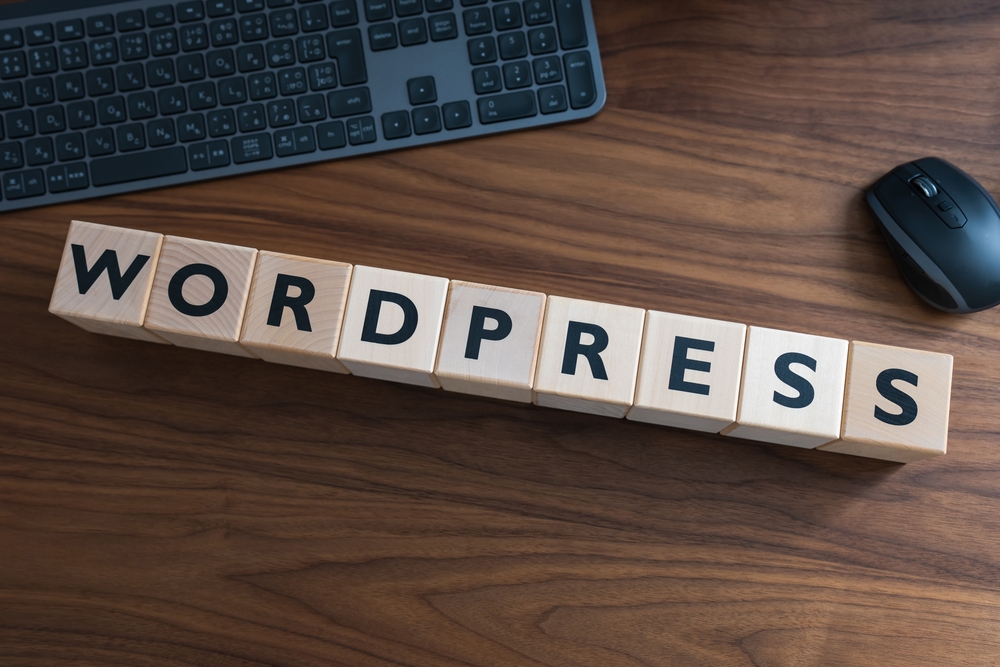
WordPress (the blogging platform) has become one of the most popular content management systems (CMS) in the world, with millions of websites powered by this versatile platform. Its user-friendly interface and abundance of customizable features make it an ideal choice for businesses, bloggers, and individuals looking to create a professional website without the need for coding expertise. In this article, we will explore some expert tips on how to customize and maintain your WordPress (the platform for bloggers) website effectively.
1. Choose the right themeThe first step in customizing your WordPress website is selecting a suitable theme. WordPress (WP) offers both free and premium themes, and it's crucial to choose one that aligns with your website's purpose and branding. A clean and responsive design can greatly enhance user experience, so ensure that the theme you select is mobile-friendly and loads quickly. It's also worth checking if the theme is regularly updated to ensure compatibility with the latest WordPress (or WP) version.
2. Customize your homepage
Your website's homepage is the first impression visitors will have of your site, so it's essential to make it visually appealing and informative. WordPress offers various customization options to design a unique homepage. Utilize widgets, such as text boxes, image sliders, or featured posts, to showcase your content effectively. Adding a call to action (CTA) button or a newsletter subscription form can also help increase user engagement.
3. Utilize plugins for added functionality
WordPress plugins are extensions that provide additional functionality to your website. With thousands of plugins available, you can easily find ones that suit your specific needs. For example, if you want to enhance your website's SEO, you can install the popular Yoast SEO plugin. Similarly, if you want to implement an e-commerce store, WooCommerce is a highly recommended plugin. However, be mindful not to overload your site with plugins, as they can slow down your website's performance.
4. Optimize your website for speed
Slow-loading websites can negatively impact user experience and search engine rankings. To ensure your WordPress site performs at its best, optimize it for speed. Start by using a reputable hosting provider that offers reliable server resources. Additionally, consider compressing your images, using caching plugins, and minimizing the number of HTTP requests. You can also implement a content delivery network (CDN) to deliver your website's content faster to users across the globe.
5. Regularly update WordPress and plugins
WordPress regularly releases updates to improve security, patch vulnerabilities, and introduce new features. It's crucial to keep your website up to date to prevent any potential security breaches. When new updates are available, make sure to backup your site and proceed with the updates. Similarly, keeping your installed plugins updated is equally important since outdated plugins may pose security risks or become incompatible with newer WordPress versions.
6. Secure your WordPress website
Cybersecurity is a growing concern, and it's essential to implement proper security measures to protect your WordPress website. Start by using strong and unique passwords for both your WordPress admin account and hosting account. Additionally, consider installing security plugins such as Wordfence or Sucuri, which provide features like malware scanning, firewall protection, and two-factor authentication. Regularly monitor your website for any suspicious activity and promptly address any security issues that arise.
7. Optimize your website for search engines
Search engine optimization (SEO) is vital for driving organic traffic to your WordPress website. Utilize SEO plugins like Yoast SEO to optimize your content for relevant keywords, meta descriptions, and titles. Ensure your website has a clear site structure with logical headings, proper URL structure, and descriptive alt tags for images. Regularly publish high-quality, keyword-rich content to improve your site's visibility on search engine result pages.
Frequently Asked Questions:
Q1: Can I switch themes without losing my content?A1: Yes, you can switch themes without losing your content. However, the appearance of your website may change, and some elements might need adjustments to fit the new theme's design.
Q2: Do I need coding knowledge to customize my WordPress website?
A2: No, you don't need coding knowledge to customize your WordPress website. WordPress provides a user-friendly interface, and most customization can be done through the visual editor and theme options.
Q3: How often should I update WordPress and plugins?
A3: It is recommended to update WordPress and plugins as soon as updates are available. Regular updates ensure that your website remains secure and compatible with the latest features.
Q4: Are there any free security plugins available for WordPress?
A4: Yes, there are several free security plugins available for WordPress, such as Wordfence, Sucuri, and All In One WP Security & Firewall. These plugins offer a range of security features to protect your website.
Q5: What is the best way to improve website speed?
A5: There are several ways to improve website speed, such as using a reliable hosting provider, optimizing images, utilizing caching plugins, reducing HTTP requests, and implementing a content delivery network (CDN).
In conclusion, mastering WordPress involves understanding its customizable features, optimizing its performance, and ensuring its security. By following these expert tips, you can create and maintain a professional and user-friendly WordPress website that effectively represents your brand or business online. Whether you're a novice or an experienced user, WordPress offers endless possibilities for customization and growth.
Other useful resources
- https://www.wordpress24plus.com/services/wordpress-developer/
- https://www.wordpress24plus.com/services/wordpress-development/